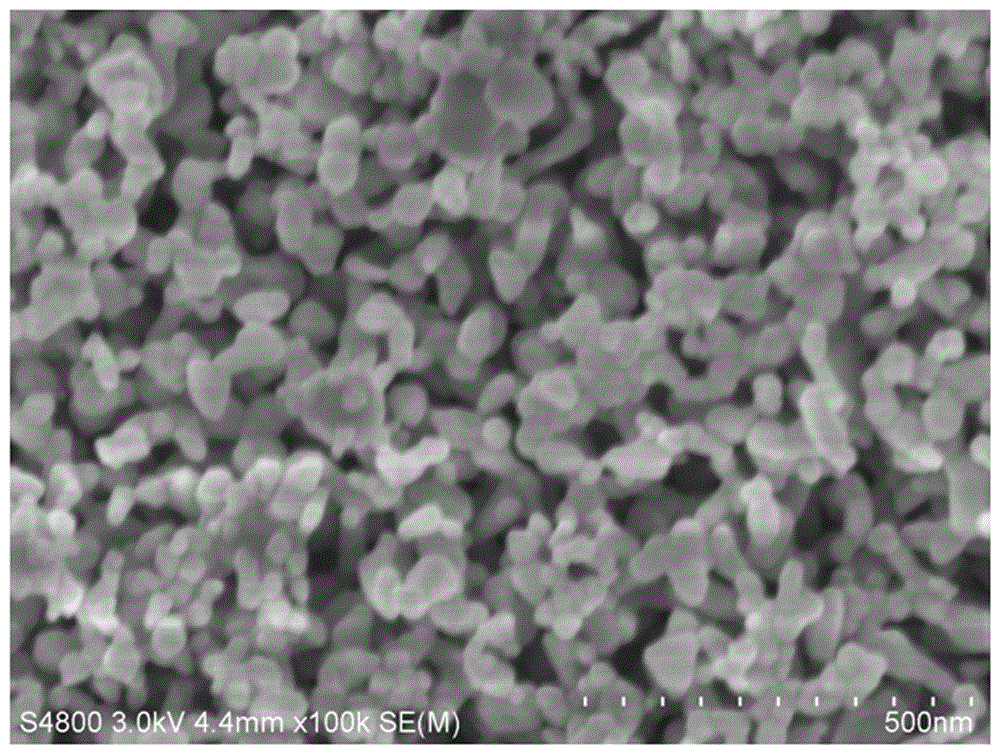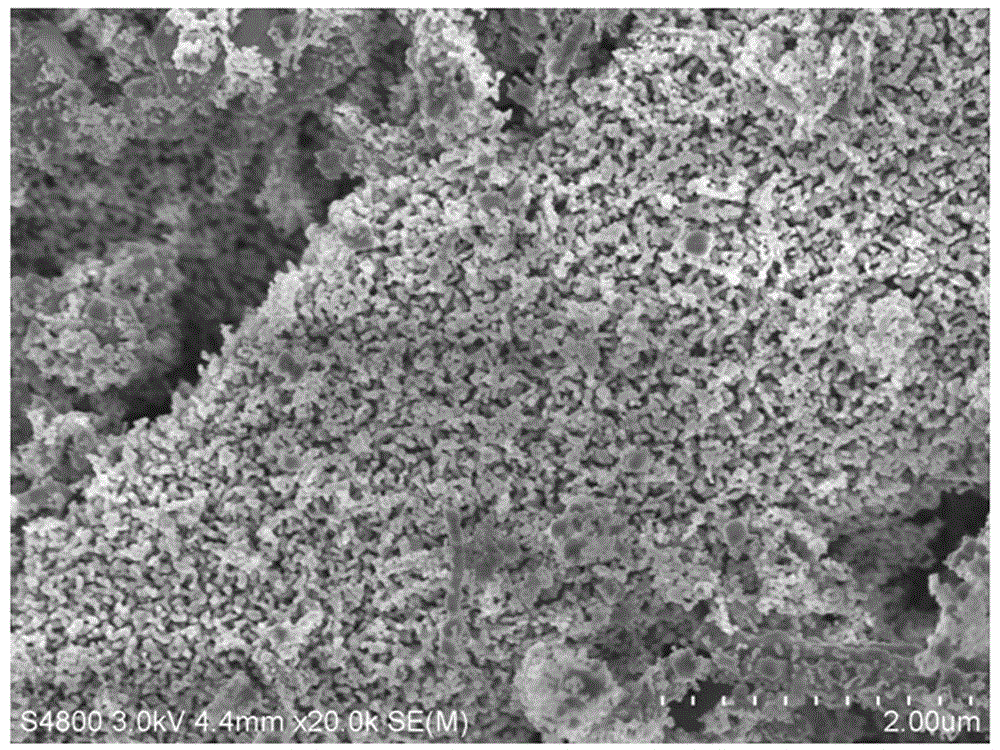Preparation method of cobaltosic oxide/stannic oxide composite nanomaterial
A composite nanomaterial, cobalt tetroxide technology, applied in the directions of cobalt oxide/cobalt hydroxide, tin oxide, nanotechnology, etc., can solve the problems of instability, wide particle size distribution, low conductivity, etc., and achieve easy operation control and low preparation cost. , the effect of high production efficiency
- Summary
- Abstract
- Description
- Claims
- Application Information
AI Technical Summary
Problems solved by technology
Method used
Image
Examples
Embodiment 1
[0030] Under the conditions of a constant temperature of 30 °C and a stirring speed of 100 rpm, the methanol solution of the mixture of cobalt chloride and stannous chloride was added dropwise to the aqueous oxalic acid solution. The molar concentration of stannous chloride methanol solution is 0.5 mol / L, and the molar ratio of cobalt chloride, stannous chloride and oxalic acid is 1:0.5:10 in turn. The molar concentration of oxalic acid is 0.5 mol / L. . The speed of dripping cobalt chloride and stannous chloride methanol solution is 60 drops / min, and the stirring reaction time is 30 minutes. After the reaction finishes, filter and wash with water and dry. The drying time is 3 hours, and the drying temperature is 80 ° C. The rate is 10 °C / min. Calcination was then carried out in a muffle furnace at a calcination temperature of 500 °C, a calcination time of 5 h, and a heating rate of 10 °C / min. After natural cooling, the target product is obtained.
[0031] The product is a u...
Embodiment 2
[0033] Under the conditions of a constant temperature of 30 °C and a stirring speed of 100 rpm, the methanol solution of the mixture of cobalt chloride and stannous chloride was added dropwise to the aqueous oxalic acid solution. The molar concentration of stannous chloride methanol solution is 0.5 mol / L, and the molar ratio of cobalt chloride, stannous chloride and oxalic acid is 1:0.2:10 in sequence. The molar concentration of oxalic acid is 0.5 mol / L. . The speed of dropping cobalt chloride and tin protochloride methanol solution is 60 drops / min, and the reaction time is 30 minutes. After the reaction is finished, filter and wash with water and dry. The drying time is 3 hours, and the drying temperature is 80°C. at 10 °C / min. Calcination was then carried out in a muffle furnace at a calcination temperature of 500 °C, a calcination time of 5 h, and a heating rate of 10 °C / min. After natural cooling, the target product is obtained.
[0034] The product is a uniform distri...
Embodiment 3
[0036]Under the conditions of a constant temperature of 20 °C and a stirring speed of 150 rpm, the methanol solution of the mixture of cobalt chloride and stannous chloride was added dropwise to the aqueous oxalic acid solution. The molar concentration of stannous chloride methanol solution is 0.5 mol / L, and the molar ratio of cobalt chloride, stannous chloride and oxalic acid is 1:0.1:20 in turn. The molar concentration of oxalic acid is 0.5 mol / L. The speed of dropping cobalt chloride and tin protochloride methanol solution is 60 drops / min, and the reaction time is 30 minutes. After the reaction is finished, filter and wash with water and dry. The drying time is 3 hours, and the drying temperature is 80°C. at 10 °C / min. Calcination was then carried out in a muffle furnace at a calcination temperature of 800 °C, a calcination time of 5 h, and a heating rate of 10 °C / min. After natural cooling, the target product is obtained.
[0037] The product is a uniform distribution o...
PUM
| Property | Measurement | Unit |
|---|---|---|
| Specific capacitance value | aaaaa | aaaaa |
| Specific capacitance value | aaaaa | aaaaa |
| Specific capacitance value | aaaaa | aaaaa |
Abstract
Description
Claims
Application Information
 Login to View More
Login to View More - R&D
- Intellectual Property
- Life Sciences
- Materials
- Tech Scout
- Unparalleled Data Quality
- Higher Quality Content
- 60% Fewer Hallucinations
Browse by: Latest US Patents, China's latest patents, Technical Efficacy Thesaurus, Application Domain, Technology Topic, Popular Technical Reports.
© 2025 PatSnap. All rights reserved.Legal|Privacy policy|Modern Slavery Act Transparency Statement|Sitemap|About US| Contact US: help@patsnap.com



